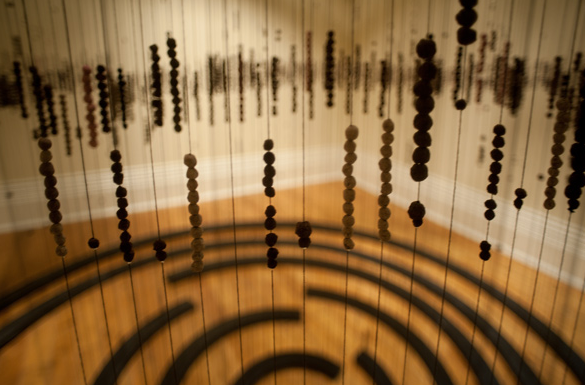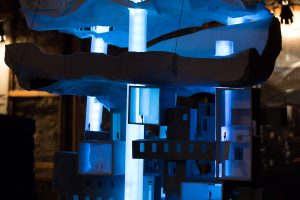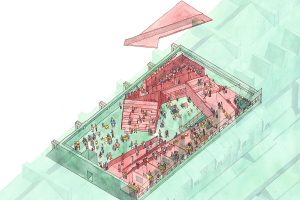15,000 Rosaries is one of nine room installations at the Gladstone Hotel’s 10th Annual Come Up to My Room (CUTMR) Event, open this weekend as part of the Toronto Design Offsite Festival. UWSA students Shane Neill and Virginia Fernandez comprise 2 of the 3 part non-profit art collaborative Fictional Territories.
15,000 Rosaries
Traditions contain within themselves latent opportunities to undermine the totalizing forces of globalization; that which is freely given over can be incomparably more valuable than that which is bought. Increasingly, everything we consume from our shoes to our i-phone, from our salad to our car, can be seen as the polemical site that indexes the labour practices of the developing world. Scrutinizing the immediacy of these objects in our everyday life reveals deeper relations between the object and its means of production, raising the unavoidable question of “the other.”
Our project uses traditional methods to produce 15,000 rosary beads from rose petals that fill a small exhibit room. The process is itself ceremonial: it requires six days of human labour to complete a rosary, 50 beads. To break down the fibres of the petals, they are boiled for an hour each day for five days, drained, and salted. By hand, the wet mix is rolled into balls to slowly dry.
Critiquing contemporary labour practices, our project re-activates the rosary revealing antagonisms between the appreciation for the human costs for the work and the willful or
ignorant unquestioning of the means of production. In rosary beads, Christianity enfolded an infinite world of faith and doctrine. Rosary comes from the latin word rosarium, meaning ‘rose garden.’ More than an object, it is a transcending mnemonic—a place and a sequence of prayer. It condenses the memory of the deceased, scriptures, and religious legends, affixing ritual to the transubstantial material object.
Playing on the often antagonistic relationship between the tendency to produce both more efficiently and more efficient products, and the social and cultural changes that such production engenders, we ask: can current design practices give over meaning to our material world?
http://fictionalterritories.webs.com/








Leave a Reply